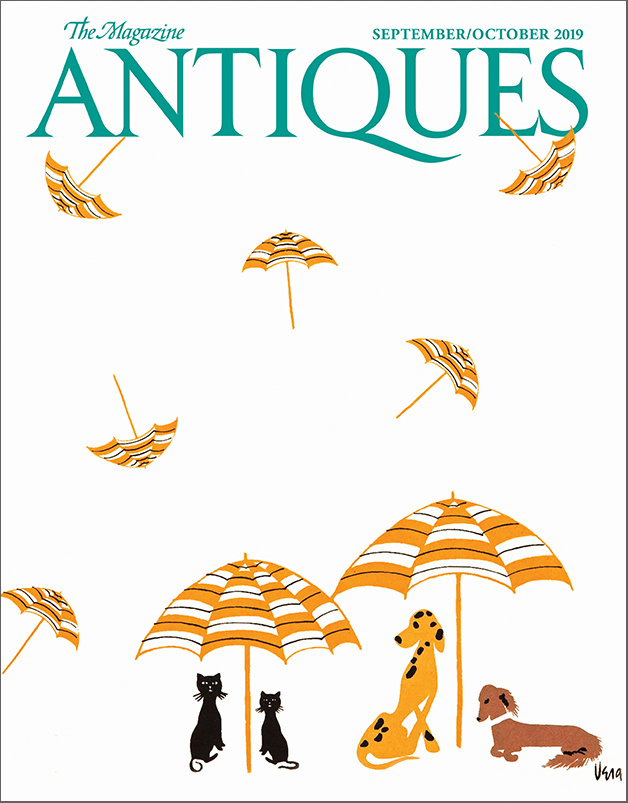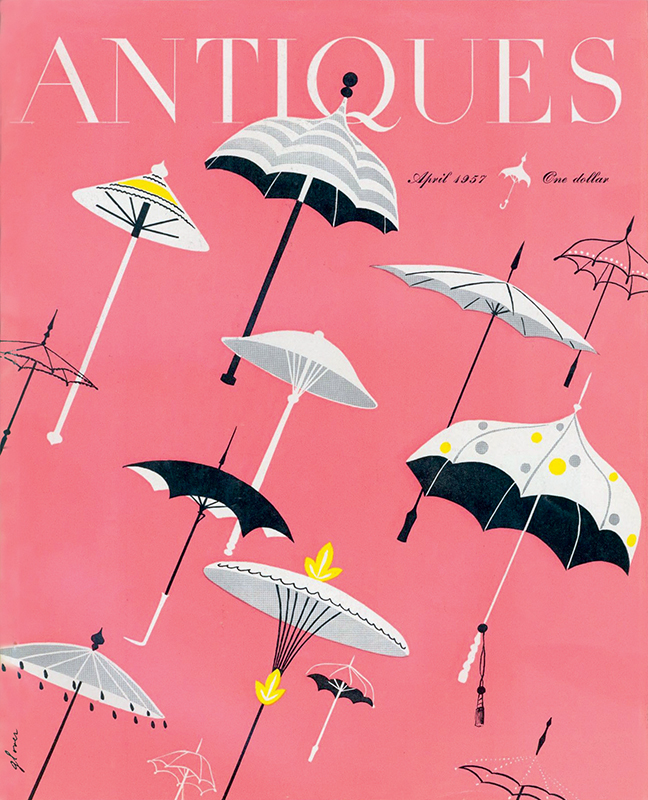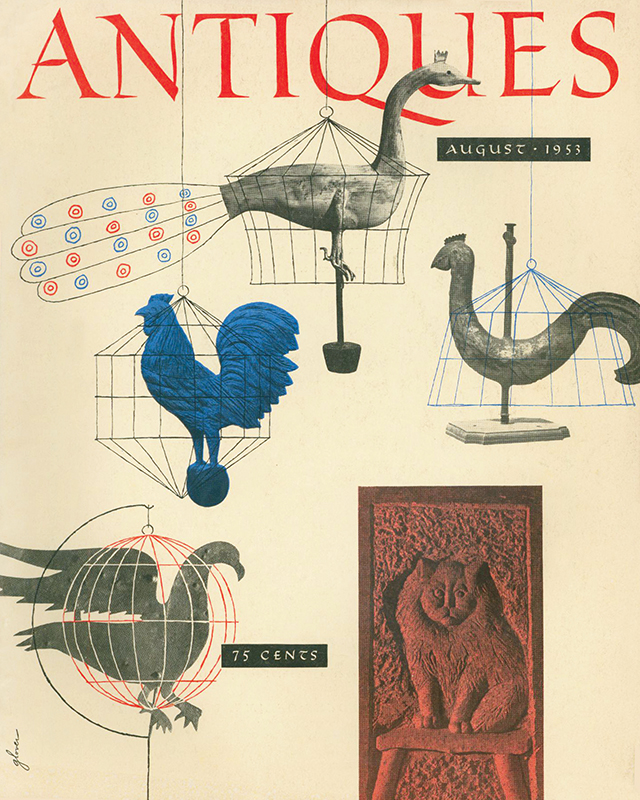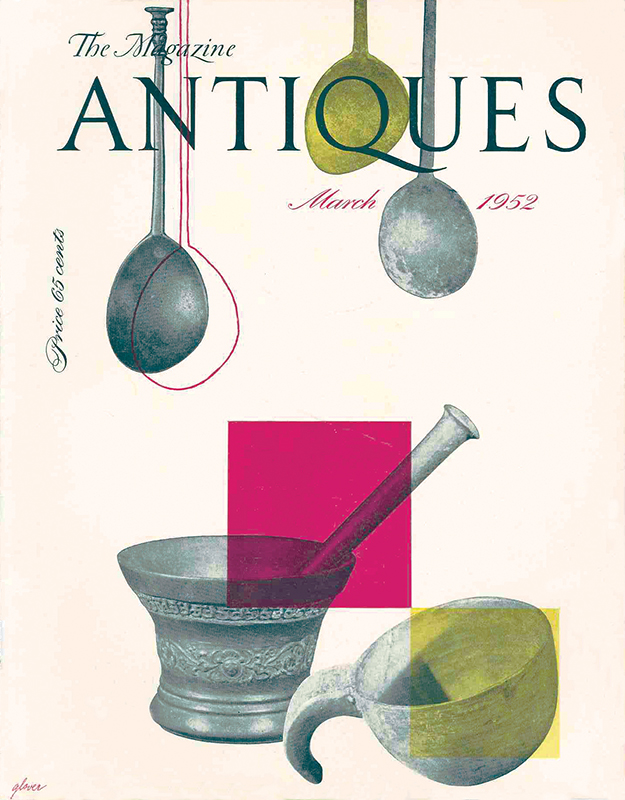
The cover for this issue is fun, charming, and cheerful, and there are very few occasions, in my estimation, on which fun, charm, and cheer are not welcome. The cover depicts a detail from a design for a silk scarf by the artist and entrepreneur Vera Neumann (1907–1993), who is the subject of a current exhibition at the Museum of Arts and Design in New York City that we write about elsewhere in these pages.

Many of our readers may be fondly familiar with Neumann’s work. The cover has an admittedly sentimental appeal to me. As my colleagues here at The Magazine ANTIQUES never tire of hearing, I began my career in journalism at Newsweek. Back then one of the Wallendas—that was (and perhaps still is) the in-house nickname for the top-tier editors, so-called because of their bold and daring weekly exploits in the upper echelons of print media—had an executive assistant who was a woman with a certain style. She favored Ultrasuede suits and sensible heels and she called pants “slacks.” She also had a seemingly endless fund of Vera Neumann scarves, which she wore around her neck tied just so—with one corner showing the Vera signature and the little ladybug emblem.

More to the point, the Neumann cover is a throwback, of sorts, for ANTIQUES. In its witty and buoyant spirit if not its graphic style, it recalls the covers devised by Milton H. Glover, who worked at this magazine from 1948 to 1973 as a designer and later as its art director. You’ll see some examples on this page of Glover covers for our magazine, which combine the clarity and directness of Paul Rand and the graphic designers of the Swiss school with the verve and audacity of Federico Pallavicini, the art director of the legendary arts and culture magazine Flair, which was so enterprising and expensive to produce—scented pages! die-cut covers! frame-worthy pull-out prints!—that it folded after its one year in publication, 1950. (You should look it up.)

The covers that Milton Glover produced are, most importantly, an implicit reminder that the arts of the past must always be re-examined and re-contextualized in contemporary times. Antiques—and you have read in this space many times how broadly we define that word—live and breathe. They do not exist in a vacuum. New scholarship and exhibitions continually reveal enlightening information about the circumstances of the making of these works of art. These discoveries also should prompt us to think again not only about the times in which they were made, but also about how we regard them in our own time.
That, however, is a long way from Vera Neumann and her “Cats and Dogs” scarf—which remains fun, charming, and cheerful in any context whatsoever. We hope you like it.
